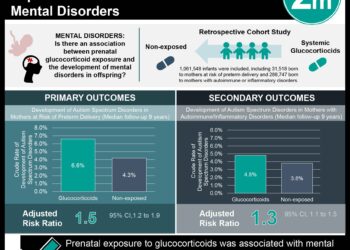Mental health problems, not combat, linked with suicide risk in U.S. military
Image: PD
1. Manic-depressive disorder, depression, and alcohol-related problems are associated with increased risk of suicide in all branches of the military.
2. Contrary to previous assumptions, length and number of deployments are not shown to be directly associated with suicide in the military.
Evidence Rating Level: 2 (Good)
Study Rundown: Beginning in 2005, U.S. military personnel in Iraq and Afghanistan have demonstrated a notable increase in suicide rates. Compared to a baseline rate of 10.3 to 11.3 per 100,000 persons in 2005, 2008 saw a jump to 16.3 per 100,000 persons. This increase has been cited as due to an increase in the number of deployments, time spent during a deployment, or the number of combat experiences. The authors of this study believe the research such assumptions are based on is not without fault and may have consequently come to incorrect conclusions. Outside of the military, mental health disorders such as manic-depressive disorder, depression, and alcohol-related problems top the list of suicide risk factors.
The authors of this study are continuing work done on the Millennium Cohort Study, the largest longitudinal US military study to date. One key drawback of this study is that the statistical models are based on 83 patient suicides, a low number relative to the study population, which may have limited the statistical power and reproducibility. However, the research is strengthened by its large prospective analysis of all military branches, active and reserve, and the agreement seen between multiple statistical models for suicide risk factors. Future research would both add to the data with current statistics as well as work to discover what can be improved to better prevent suicidality in the military given our new knowledge of the subgroups most at risk.
Click to read the study published today in JAMA
Click to read an accompanying editorial published today in JAMA
Relevant Reading: The U.S. Department of Defense Millennium Cohort Study: Career Span and Beyond Longitudinal Follow-up
In-Depth [prospective cohort]: This study followed 151,560 current and former US military personnel from all service branches, including active and Reserve/National Guard who were included in the Millennium Cohort Study. Between 2001-2008, 646 participants died, of which 83 (12.8% of total deaths) were due to suicide, resulting in a crude rate of 11.73 (95% CI, 9.21-14.26) suicides per 100,000 person years. Adjusting for age and sex revealed male sex, depression, manic-depressive disorder, heavy or binge drinking, and alcohol-related problems as significant risk factors for suicide. In a multivariable Cox model, male sex (HR, 2.14; 95% CI, 1.17-3.92), depression (HR, 1.96; 95% CI, 1.05-3.64), manic-depressive disorder (HR, 4.35; 95% CI, 1.56-12.09), and alcohol-related problems (HR, 2.56; 95% CI, 1.56-4.18) were significant risk factors for suicide. Factors such as cumulative days deployed, number of deployments, and combat experience, however, did not show a significant association with suicide.
By John Prendergass and Brittany Hasty
More from this author: Reducing surgical complications may increase costs, Protected sleep periods improve intern alertness and sleep duration, ADHD medication decreases rates of criminality in ADHD patients, Low dose aspirin shows net clinical benefit in patients with first unprovoked venous thromboembolism, Rare TREM-2 mutation implicated in Alzheimer’s Disease
© 2013 2minutemedicine.com. All rights reserved. No works may be reproduced without expressed written consent from 2minutemedicine.com. Disclaimer: We present factual information directly from peer reviewed medical journals. No post should be construed as medical advice and is not intended as such by the authors, editors, staff or by 2minutemedicine.com. PLEASE SEE A HEALTHCARE PROVIDER IN YOUR AREA IF YOU SEEK MEDICAL ADVICE OF ANY SORT.






